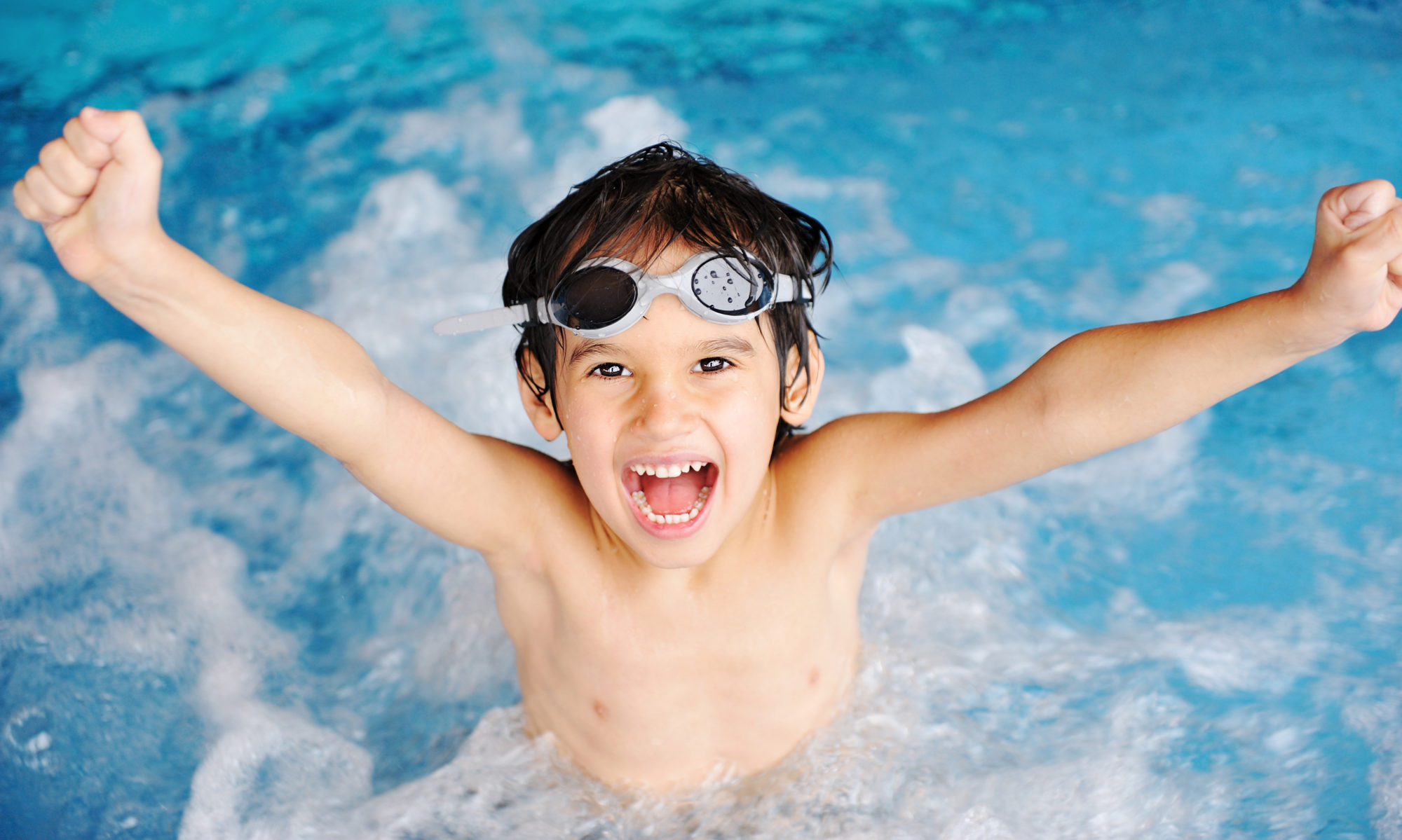When your kids have learned how to glide in streamline position, you can start to teach them the idea of rolling in the water to make their swimming stronger. This land exercise is the precursor to a lifetime of rolling in the water.
Teaching Your Kids to Roll When They Swim
Eventually, most of your child’s time swimming will be spent rolling from side to side, slicing through the water, instead of on his stomach, pushing through the water. Because of the way the shoulder joint moves, swimming on your side allows you to be even longer. You can give your child a feel for this on land. Have him stand facing a wall with his body touching it. Ask him to stretch both hands up. Have him keep his fingertips against the wall and twist his torso from side to side.
When the side of his body twists close to the wall, that arm reaches higher than it does when his torso is flat against the wall. The same thing happens in the water. Doing this will also help him feel how his core and back muscles move when he rotates. Eventually, that’s what your child will aim for in the water.
